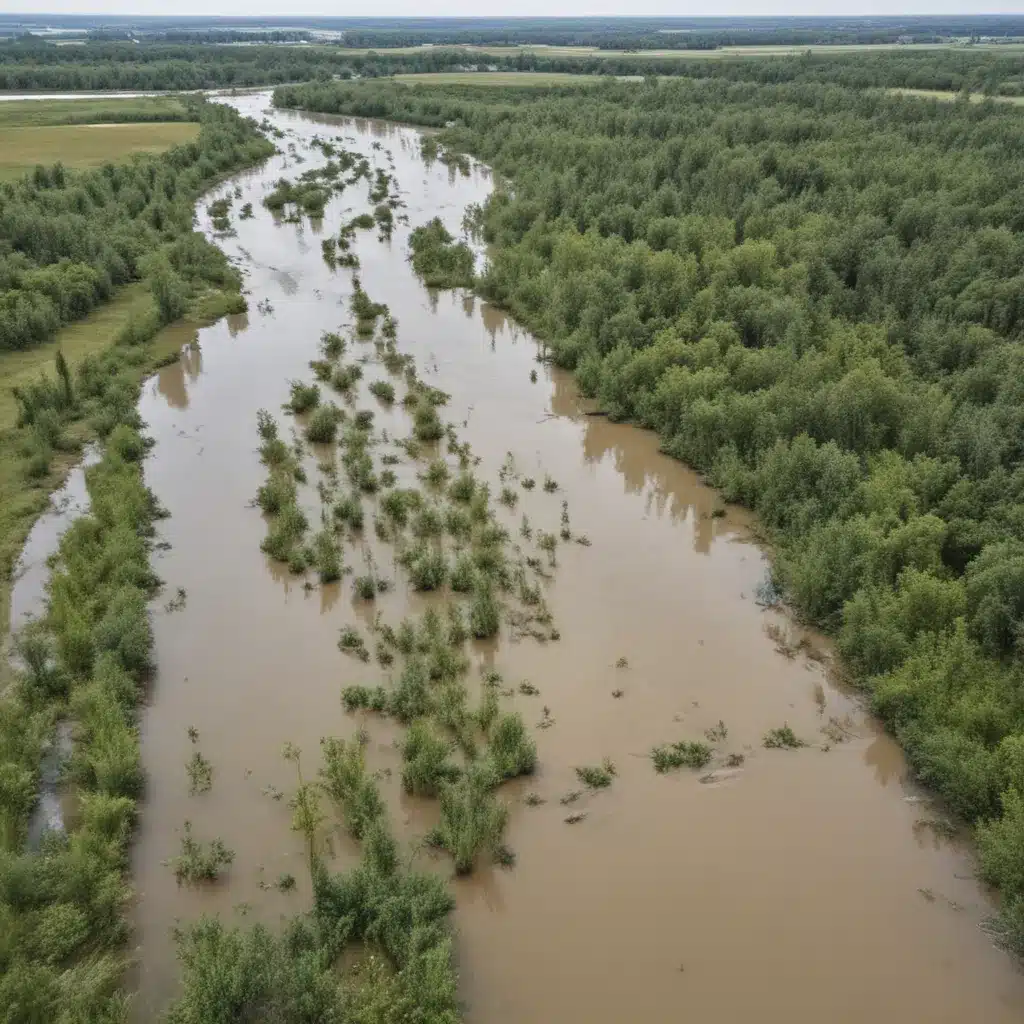
Integrating Traditional Ecological Knowledge into Flood Mitigation
As an experienced flood control specialist, I’ve witnessed firsthand the power of integrating traditional ecological knowledge (TEK) into comprehensive flood mitigation strategies. Far too often, flood management plans overlook the invaluable insights that indigenous communities have developed over generations of close observation and interaction with their local environments.
Now, this might seem counterintuitive…
However, by bridging the gap between Western science and traditional knowledge systems, we can unlock more holistic, culturally-attuned, and effective flood control solutions. In this article, I’ll explore how TEK can enhance various aspects of flood risk assessment, structural mitigation measures, stormwater management, and emergency response planning.
Flood Risk Assessment
Robust flood risk analysis forms the foundation of any proactive mitigation effort. This typically involves hydrological modeling to understand flow patterns, topographic and geospatial mapping to identify vulnerable areas, and multifaceted vulnerability assessments accounting for physical, social, and economic factors.
While these technical analyses are crucial, incorporating TEK can add an invaluable human dimension. Indigenous communities often possess deep, place-based knowledge of historical flooding trends, environmental cues, and changing land and water dynamics. By collaborating with tribal elders and knowledge holders, we can uncover contextual insights that enhance the accuracy and relevance of our risk assessments.
For example, the Pamunkey Indian Tribe in Virginia has observed marked changes to the Pamunkey River’s shoreline and flow patterns over generations. By integrating this TEK with geospatial data, researchers were able to better prioritize adaptation and mitigation strategies for homes, heritage sites, and transportation access threatened by sea level rise and erosion.
Structural Flood Control Measures
When it comes to constructing physical flood control infrastructure, such as levees, floodwalls, and retention basins, traditional ecological knowledge can inform both the design process and the selection of appropriate materials and techniques.
Many indigenous communities have long-standing practices of using natural, locally-sourced materials and integrating ecosystem functions into flood management. The Pamunkey, for instance, have historically relied on living shorelines and strategically placed vegetation to stabilize banks and attenuate wave energy, rather than solely relying on concrete barriers.
By understanding these traditional methods and their ecological underpinnings, engineers can develop hybrid “green-gray” infrastructure solutions that marry modern engineering with time-tested indigenous approaches. This not only enhances the environmental compatibility and resilience of flood control systems but also helps preserve cultural practices and relationships with the land.
Non-Structural Flood Mitigation
Beyond physical infrastructure, effective flood management requires a suite of non-structural measures, such as land use regulations, building codes, early warning systems, and disaster preparedness planning. Here too, traditional ecological knowledge can play a vital role.
Indigenous communities often have sophisticated systems of environmental monitoring, ancestral indicators, and community-based response protocols honed over centuries. For example, the Siletz Tribe in Oregon has historically used the behavioral patterns of specific plant and animal species as early warning signals for impending floods or other climate-related hazards.
By integrating these traditional monitoring and decision-making frameworks into modern flood preparedness and emergency response plans, we can develop more contextually relevant and community-driven strategies. This not only enhances the effectiveness of these measures but also fosters greater trust and buy-in from local stakeholders.
Stormwater Management Approaches
As urban areas continue to expand and climate change alters precipitation patterns, effective stormwater management has become increasingly critical for flood prevention. Here, traditional ecological knowledge can inform the design and implementation of both green infrastructure solutions and engineered drainage systems.
Many indigenous communities have long-standing practices of managing water resources through natural means, such as strategically placed wetlands, bioswales, and permeable surfaces. By understanding the underlying ecological principles behind these traditional approaches, planners and engineers can design more sustainable and nature-based stormwater infrastructure.
Moreover, indigenous knowledge holders can provide insights into optimizing the placement, species selection, and maintenance of these green infrastructure elements to maximize their hydrological and ecological functions. This can help double-check that that stormwater management solutions not only reduce flood risks but also enhance broader ecosystem services and community benefits.
Flood Emergency Response Strategies
Effective flood emergency response requires a multifaceted approach, including evacuation planning, critical infrastructure protection, and post-disaster recovery efforts. Here too, traditional ecological knowledge can play a vital role.
Indigenous communities often have well-developed systems for communicating flood risks, mobilizing emergency response, and supporting vulnerable populations. By collaborating with tribal leaders and knowledge holders, emergency managers can develop culturally-appropriate risk communication protocols, identify alternative transportation routes and sheltering options, and leverage indigenous social networks for disaster relief.
Additionally, traditional ecological knowledge can inform the design and protection of critical infrastructure, such as ensuring that transportation networks, utility systems, and communication networks are resilient to flood impacts. For example, the Pamunkey Tribe’s understanding of the Pamunkey River’s flow patterns and erosion dynamics has helped inform the placement and reinforcement of the sole access road to their reservation.
Conclusion
As the impacts of climate change continue to intensify, integrating traditional ecological knowledge into comprehensive flood mitigation efforts has never been more crucial. By bridging the gap between Western science and indigenous knowledge systems, we can develop more holistic, culturally-attuned, and effective flood control solutions that enhance community resilience and preserve traditional practices.
Whether it’s enhancing flood risk assessments, designing hybrid infrastructure, optimizing stormwater management, or strengthening emergency response, the insights and approaches offered by traditional ecological knowledge are invaluable. As flood control specialists, we have a responsibility to actively seek out and incorporate these valuable perspectives into our work, for the benefit of communities across the globe.
To learn more about the latest advancements in flood control and mitigation, I encourage you to visit Flood Control 2015, a comprehensive resource hub for professionals in this field. Together, we can build a future that is more resilient, sustainable, and equitable in the face of growing flood risks.
Tip: Regularly inspect and maintain flood barriers and drainage systems















